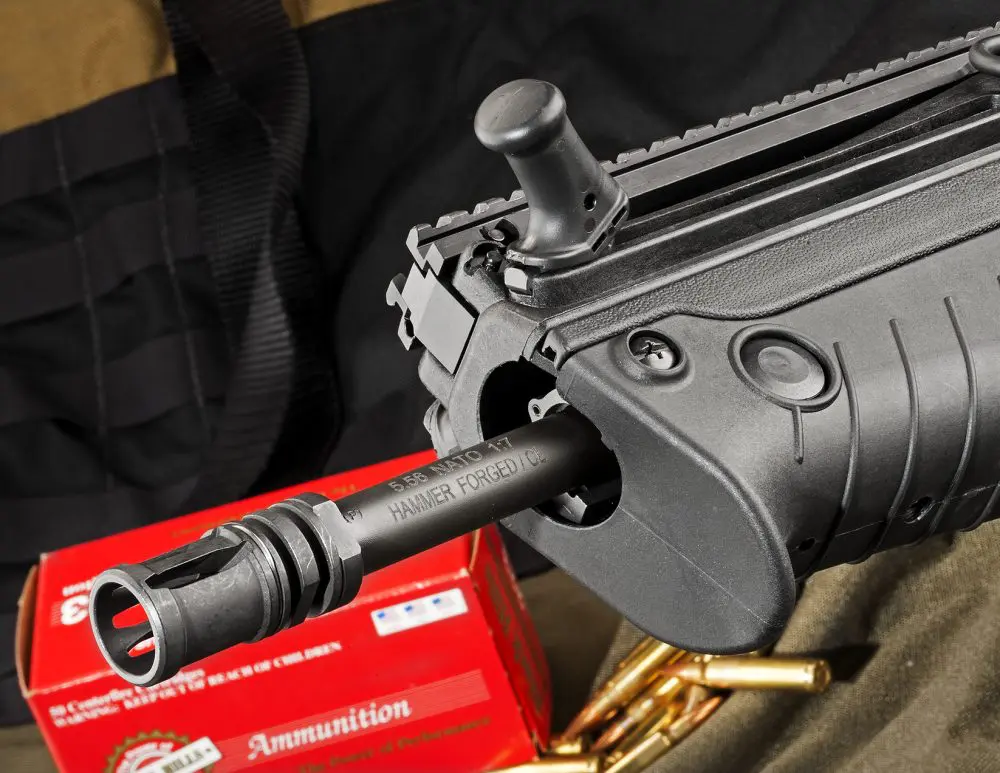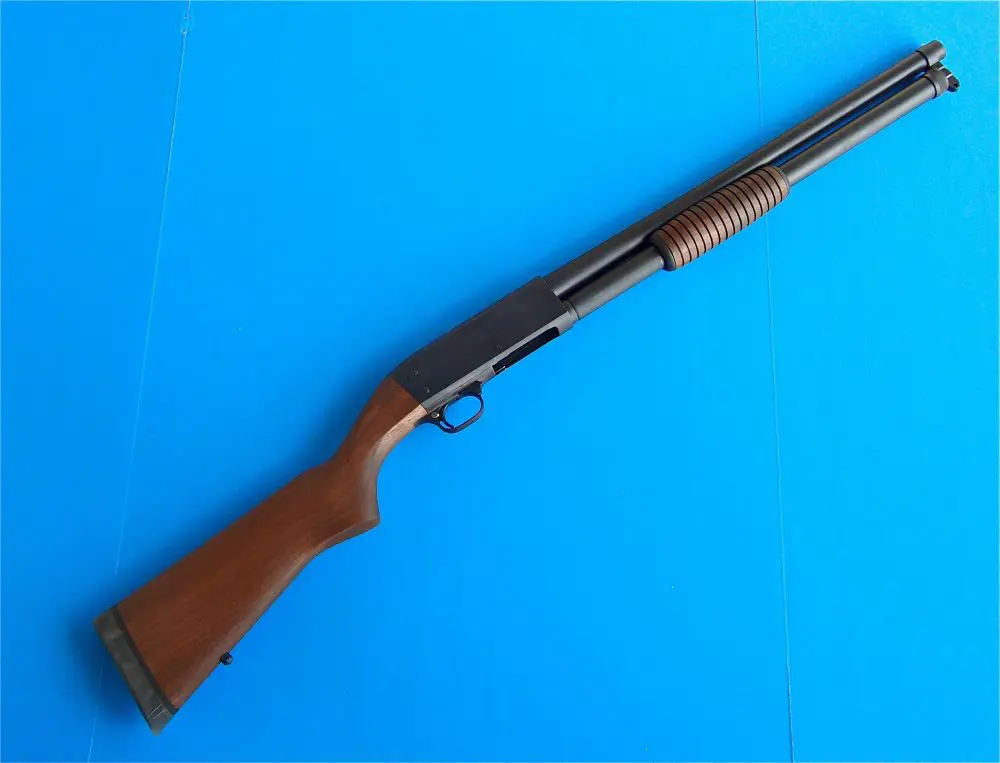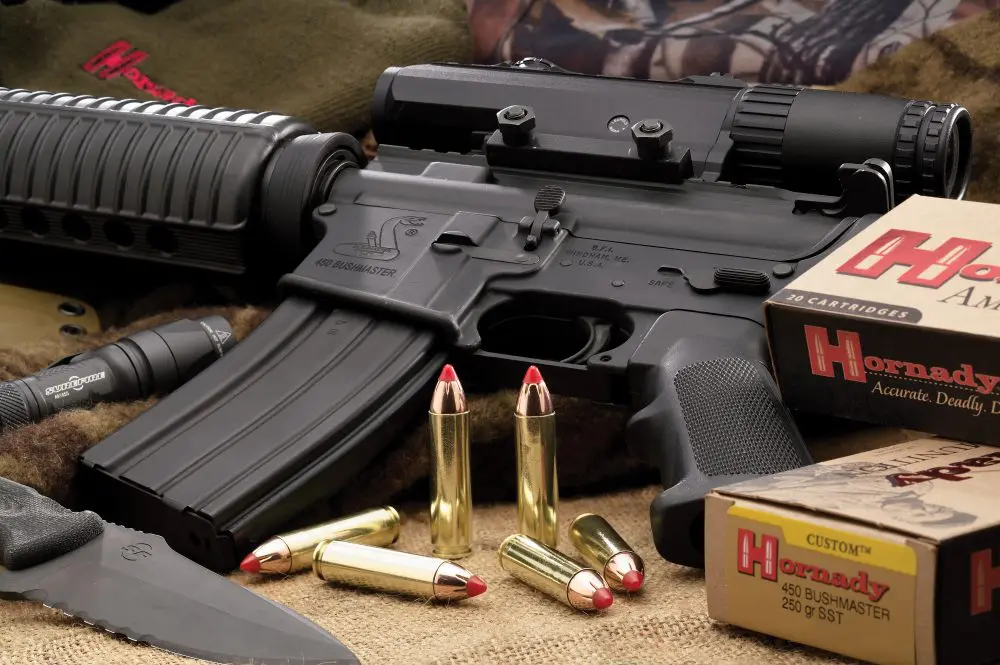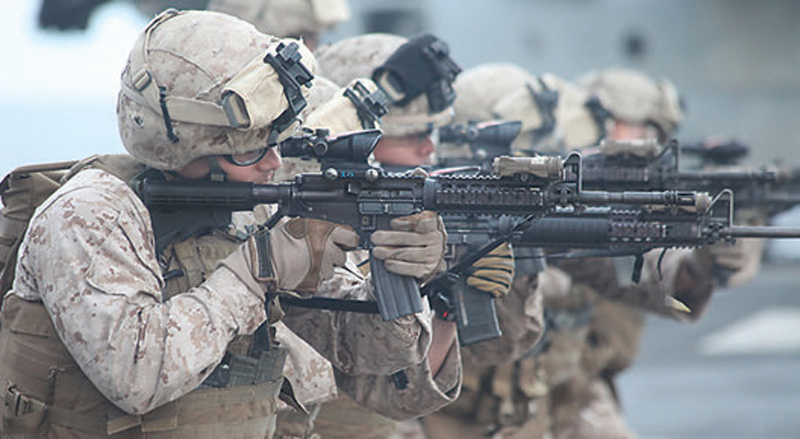

Change is hard. Weapons programs tend to be especially conservative.
Pre-sliced bread went from an innovation circa 1930 to the predominant way to buy a loaf nationwide by 1933. At that same time, the country was perfectly happy to stick with the bolt-action 1903 Springfield despite the capabilities available with selfloading rifles like the M1 Garand.
The past decade of conflict has demonstrated the need to move on. Items we collectively have grown accustomed to with the M16/AR family are becoming less relevant than current choices or are beyond their usefulness in the current environments.
Table of Contents
FIXED STOCK
There was a time when having a solid buttstock to use as a club made sense. Progress is slow, but data pouring in shows that the benefits of having an adjustable stock far outweigh not getting to beat someone with a fixed one.
The bulk of all items in the inventory are sized to the individual: helmets, boots, body armor, et al. Even military ceremonial swords come in multiple blade lengths to account for the length of a trooper’s arm.
It is counterintuitive that the primary weapon a soldier must use is not adaptable to his dimensions and situation. The shooter with orangutan limbs and his battle buddy with alligator arms do not need nor benefit from a common stock length. To make matters worse, the M16A2 and M16A4 series are cursed with a stock that is too long for all but those at the 95th percentile for size, influenced by the military’s emphasis on precision shooting from prone.
When the M4s first began to gain traction, I was concerned about the ruggedness of the stock. It didn’t help that, while the carbines were still low-density issue items, I saw a state trooper render his M4-style AR unusable by striking the deck to clear a stoppage and bending the receiver extension (buffer tube). This turned the carbine into a non-firing cudgel and made an impression upon me.

What I missed was that the particular carbine had a commercial diameter receiver extension and was from a maker that was using a variety of cost-saving shortcuts that affect overall durability compared to the genuine M4A1 I was shooting. In the years since, the durability of the M4-style collapsible stock and receiver extension has been well established.

I recently spoke with an armorer who maintains the weapons at one of the DoD’s most grueling schools. This guy has seen about everything that can possibly break on an AR, and he could not recall any issues with the receiver extensions and only a few minor instances of the plastic stock portion cracking, which is user replaceable. If they are not breaking, hard use is really no drama.
Shooters are realizing that adjustable is good, that the best fit to shoot from prone may be different than from shooting on the move, and that both of those may be different for an individual depending on the clothes and equipment worn. I routinely mark my tube with a setting for “slick” and one for armor.
It is interesting to look at the highend shooters in a unit and see that each is running his stock at a different length. This leads to the suggestion that, while upgrading ARs to collapsible stocks, fiveor six-position receiver extensions be chosen. The old “in/middle/out” three positions are unnecessarily restrictive.
BAYONETS—REALLY?
While the back end of the rifle’s modernization has been hindered by the influence of the club, the front end remains tied to the pike.
Have you ever looked at an M4 and wondered why there is so much barrel exposed? I mean, shooters are cautioned to keep the barrel off of support to prevent wild shots, so extending the handguard makes sense, right? Yet nowadays the men are cramming their support hand into what little space is left once lights and lasers have been affixed onto the standard seven-inch rails, with many inches of naked barrel out beyond the front-sight housing. Blame the bayonet lug at the bottom of the housing.
The driving factor in the carbine length gas system and the corresponding seven-inch rail is the ability to mount a standard M16 bayonet. There were days when the bayonet was critical to tactics and the employment of troops, but I will quietly suggest that those times have passed. If poking our enemies truly is a universal requirement in 2012 and beyond, then perhaps the mount can be changed to a Picatinny and the handguard can extend to near the length of the barrel.
Longer rails have really only been gaining traction in the last few years, but once you use one, you will not look back. From being able to support the rifle for the shot more effectively to keeping a “just had a fight” hot barrel off you, there is a lot gained with the longer rails.
There are low densities of long rails in active military use both with the 10- to 12-inch SBRs and the standard 14.5-inch carbine barrels. Looking at a wide variety of these, I’ve yet to see any shooter placing his rail-mounted “stuff” and support hand within the traditional seven-inch limit.
The additional bennie that a longer rail opens up is the option to select a mid-length gas system. Many, perhaps most, of the serious pros in the shooting and training sectors have migrated to the mid-length gas system. It is theoretically more reliable, since bolt velocity is reduced, providing the magazine spring a smidge more time to feed the succeeding round. Likewise the reduced heat and steam coming back into the action are thought to extend service life of the high-wear parts.
As anecdotal as the first two points seem, the tangible effect of stretching out the gas port a few inches forward is that the carbine shoots “softer.” Realistically it does so just enough that the shooter is sitting on an advantage during tough follow-up shots, awkward positions, or weak-hand scenarios. And while organizations are extending the handguards, they may as well choose if they “want” the gas port to remain carbine length.
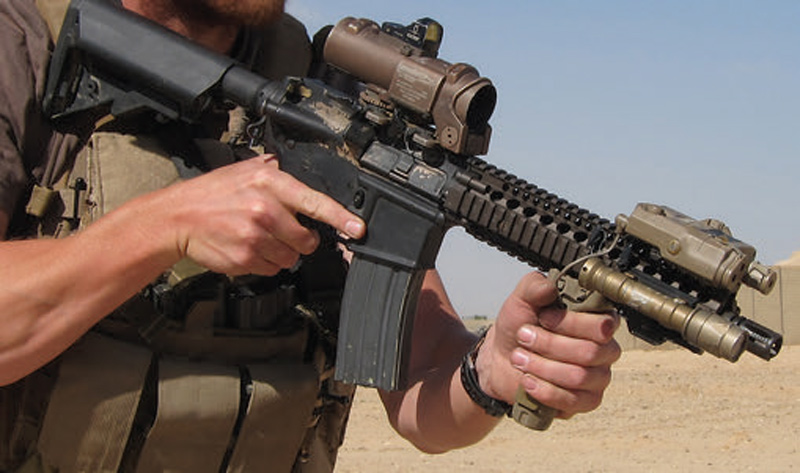
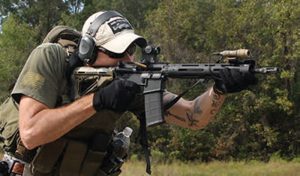
TRIGGERS
Of all the things the U.S. Government requires of their ARs, the most baffling is the burst trigger. There is a long tradition of military bureaucrats worrying about the cost and logistical burden of troops wasting ammo, dating back to the breechloading era. It has manifested in most American arms of their era, from Custer’s men battling Winchester repeater-armed natives with trapdoor single shots, to doughboys in the trenches with 1903 Springfields with magazine cutoff levers and a pile of rounds to single load.
The burst trigger was a way to limit full-automatic “wastage” of ammunition, but has remained a part of the USGI AR as if it adds a real capability. What that capability “is” is hard to say.
The specialized military CQB schools quickly abandoned full-automatic fire in the M4A1 when the SOPMOD guns were fielded and replaced SMGs such as the MP5. Tellingly, they did not replace the triggers with burst parts, but simply trained to rapidly apply semiautomatic fire to reduce threats.
The branches of the military are expert at determining and training to standards for things that matter. I have been actively looking for years and have yet to find a single drill, training event or qualification that relates to employing the rifle or carbine on burst. No one cares and it is largely a forgotten setting on the weapon that newbies occasionally mistake for “safe.” The problem is that, for the unquantifiable upside to having a three-round burst, you get some real fleas.
The burst trigger is really a misnomer. It should be called an “up to three rounds burst” trigger. The mechanism has three notches, and the trigger must be held back for all three rounds to fire. If for some reason the trigger is released early, the next “burst” will have only the remaining round or two from the first trigger press. That’s not the end of the world, but it gets worse.
The distinct notches that allow the trigger to count to three in that manner affect the quality and feel of the trigger in semi-auto as well. There are three distinct trigger pulls in a typical USGI burst-equipped weapon: heavy and somewhat crisp, midweight and way mushy, and light/somewhat mushy. It can be challenging to get consistent hits on tough targets when the trigger is constantly changing.
This is enough of an issue that there is a longstanding and quirky workaround used by service team competitors at the 500-yard line slow fire: manually load each round, cycling the action twice and dropping the hammer in order to get back to the preferred trigger weight.
So you say, it’s a fightin’ gun and unlikely to need to be applied with that level of precision. Well, up close when the shooter is trying to run the weapon flat out, the different trigger presses and slightly different sear resets are just as much of a pain. I have seen pretty experienced guys miss the reset, which adds a whole lot of relative hang time without rounds and causes the shooter’s OODA loop to go internal to problem solve rather than stay on the problem at the end of the carbine. Deal breaker.
I recently had to spend a good bit of time with an M4 (burst) rather than my preferred M4A1 (full auto) or comparable semi ARs. I rarely went a week without cursing bean counters and their infernal burst trigger. It physically pains me to see law enforcement patrol rifles spec’d out with burst triggers in order to ape the military’s poor choice. Simple math: better triggers = better hits.
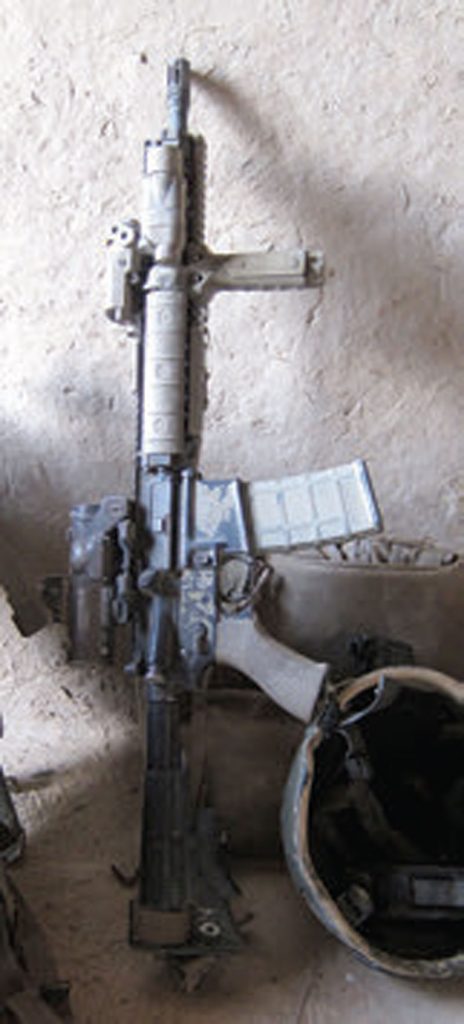

ON THE VERGE
The Rifle Combat Optic (RCO) as adopted over the last decade was a definitive upgrade to the iron sights that had served on the M16 platform unchanged since the early 1980s. The rifleman now had a day/night capability, the ability to apply holds at distance without turning knobs, and four-power magnification to help locate and identify targets. I was issued an early sample and it was much appreciated for the role I was using it in at the time.
However, there has been a lot learned since then about fighting with the rifle and what capabilities are most important. The RCO is best viewed as a first generation combat optic. It was far better than irons or delicate huntingstyle scopes, but the data suggests better alternatives are out there with the explosion of tactical optics on the market since the early days of OIF.
The RCO emphasizes seeing over shooting. There is still a widely held belief that seeing better allows shooting better. In the “on your hind legs, wearing awkward gear and winded” environment that fights tend to gravitate to, this myth gets busted. Magnification up close may mean seeing less rather than more, or a big mess of man-jammies when you’re seeking center chest.
Magnification cuts both ways as well, meaning that as you’re running and drop down a gear to shoot on the move, the resulting wobble zone is now magnified by four also. From an unsupported position or while shooting rapidly, the least possible magnification will outshoot more magnification nearly every time.
Eye relief is perhaps the next biggest issue with the existing combat optic. The eye relief is criminally short. Look at any rifleman using an RCO and you are likely to see the eyepiece under the brim of his hardhat and perhaps brushing against any eyepro. This sucks the shooter in and, in conjunction with a modest field of view, cuts awareness down to the picture in the lens, making it very difficult to keep track of teammates and unknowns in the chaos.
Even within Trijicon’s own lineup of ACOGs, there are available optics with much more realistic eye relief. A good starting point is three inches from the rear of the optic to the eyeball.
The question is that, if the Gen 1 RCO is looking a little “canvas sail in the steam” era, what is Gen 2? There are several capabilities worth chasing.
Foremost is a low-power option, as close to a true 1X as possible, with no more than 1.25X. Current piggyback solutions that have an MRDS on top of an RCO or similar have it backwards—the rifle should be set up to fight, meaning up close and no power needed with the red dot or 1X option on the cheek-weld sighting plane. Shooting up close with a monstrous muzzle offset and an awkward chin weld is no way to guarantee solid results.
Only after the low power requirement, ideally with an illuminated aiming point, is satisfied do you look at cranking up the magnification. How much is driven by mission requirements, with some environments being well served by four power and others suggesting six or eight for finding and identifying targets. Whatever the choice, it needs to have generous eye relief and be readily accessible by lever or twist on the same sighting plane.
The current service rifle and carbine have piled up stacks of our nation’s enemies over the last decade. However, there are readily available upgrades to allow those who serve to squeeze more performance out of the weapons. Individuals and agencies need not blindly choose lookalikes that are lacking better features developed over hard experience.

